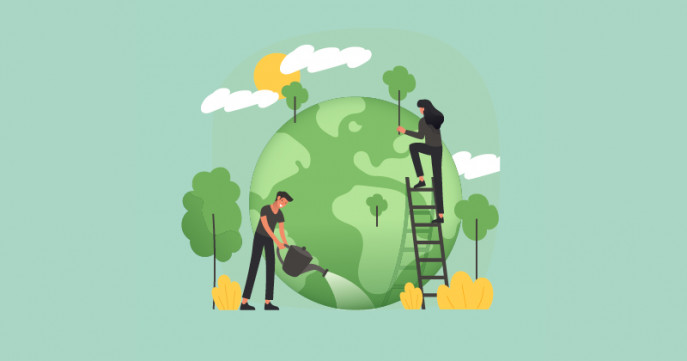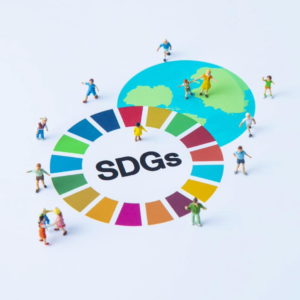Cultivating a Green Workforce Strategy : Today sustainability takes center stage, businesses are recognizing the need to cultivate a green workforce. Building a sustainable future starts with a strategic approach to developing a workforce that is skilled and committed to environmental responsibility.
bility
The first step in building a green workforce strategy is recruiting individuals who share your company’s commitment to sustainability. Look beyond traditional hiring criteria and seek candidates with a passion for environmental responsibility. Craft job descriptions that highlight your company’s commitment to green practices, attracting like-minded professionals who will contribute to your sustainability goals.
Cultivating Skills: Training for a Green Future
Once you’ve planted the seeds of sustainability in your workforce, it’s crucial to nurture them through proper training. Develop programs that equip your employees with the skills needed for eco-friendly practices in their respective roles. This investment not only benefits your business but also empowers your workforce to contribute meaningfully to a sustainable future.
Watering the Roots: Fostering a Culture of Sustainability
A green workforce strategy thrives in a culture that embraces sustainability at its core. Foster an environment where eco-conscious decisions are not just encouraged but celebrated. Implement green initiatives, such as waste reduction programs or energy-efficient practices, and recognize employees who contribute to these efforts. This not only boosts morale but also reinforces your commitment to a sustainable workplace.
Pruning for Growth: Continuous Improvement and Innovation
Cultivating a Green Workforce Strategy : A sustainable workforce is one that adapts and evolves. Encourage employees to continually explore and implement new environmentally friendly practices. Create platforms for idea-sharing and innovation, allowing your workforce to contribute to the growth of your green initiatives. This not only keeps your strategy fresh but also instills a sense of ownership and pride among your employees.
Blossoming Together: Collaboration and Partnerships
Building a green workforce isn’t just about what happens within your company; it’s about extending your impact beyond your walls. Collaborate with like-minded organizations and industry partners to amplify your sustainability efforts. Joint initiatives not only broaden your reach but also contribute to a collective commitment to building a greener, more sustainable future.
As businesses take the lead in promoting environmental responsibility, a green workforce strategy emerges as a key differentiator. By strategically recruiting, nurturing skills, fostering a culture of sustainability, promoting continuous improvement, and embracing collaborations, companies can build a workforce that not only drives success but also contributes to a brighter and more sustainable tomorrow. Through these steps, your business can harvest success while sowing the seeds for a greener future.
As we forge ahead into a future defined by environmental consciousness, it’s crucial to stay abreast of emerging trends that are reshaping the way we approach sustainability. This blog delves into the latest innovations in technology, policy shifts, and societal changes that are propelling the evolution of green skills, paving the way for a brighter and more sustainable future.
Tech Innovation Sprouts New Green Proficiencies
The marriage of technology and sustainability is giving rise to a new breed of green skills. From data analytics for eco-friendly resource management to proficiency in renewable energy technologies, the workforce of tomorrow will need to navigate the digital landscape with an environmentally conscious mindset. As automation and artificial intelligence become integral to industries, green skills will play a pivotal role in steering these advancements toward sustainable outcomes.
Policy Changes: Catalyzing the Green Skills Revolution
Governments and organizations worldwide are recognizing the urgent need for sustainable practices, and policy changes are instrumental in driving this shift. Emerging trends in green skills are increasingly aligned with evolving regulations and incentives. Professionals versed in environmental policy analysis, sustainable compliance, and green auditing are becoming essential contributors to organizations striving to meet and exceed regulatory standards.
Societal Shifts: The Rise of Eco-Conscious Consumerism
Cultivating a Green Workforce Strategy : As societal attitudes toward sustainability undergo a profound shift, so do the skills demanded by the workforce. Consumers are becoming more environmentally aware, influencing the demand for sustainable products and services. This has led to a surge in green marketing and communications skills, as businesses seek professionals who can authentically convey their commitment to sustainability, connecting with a growing base of eco-conscious consumers.
Circular Economy Expertise: Closing the Sustainability Loop
The concept of a circular economy, where resources are reused, recycled, or repurposed, is gaining prominence. Professionals skilled in circular economy practices are becoming invaluable assets to organizations aiming to minimize waste and environmental impact. From supply chain management to product design, green skills in circular economy principles are pivotal for businesses seeking to adopt a holistic approach to sustainability.
Adaptability and Lifelong Learning: The Cornerstone of Green Skills
In the ever-evolving landscape of green skills, adaptability and a commitment to lifelong learning are becoming non-negotiable. Professionals must be ready to embrace change, continuously update their skill sets, and stay informed about the latest trends in sustainability. This proactive approach not only ensures individual professional growth but also contributes to the overall resilience and agility of the green workforce.
The future of sustainable work is intricately tied to the evolution of green skills. By embracing the latest trends in technology, staying attuned to policy changes, navigating societal shifts, understanding circular economy principles, ad prioritizing adaptability, professionals can position themselves at the forefront of the green skills revolution.
As we collectively shape a sustainable future, the evolving landscape of green skills stands as a testament to the ingenuity and determination of a workforce committed to positive change.
In the symphony of sustainability, the government holds the conductor’s baton, orchestrating initiatives and policies that harmonize the adoption of green skills. This blog unfurls the pivotal role government plays in shaping the demand for sustainability in both public and private sectors. Let’s delve into how these initiatives are not just directives but catalysts for a brighter, more sustainable future.
-
Legislation as a Green Beacon
Cultivating a Green Workforce Strategy : Governments worldwide are recognizing the imperative of sustainable practices, and legislative frameworks are emerging as beacons guiding organizations toward greener pastures. Policies mandating eco-friendly standards, carbon emissions reductions, and sustainable sourcing are nudging businesses to adopt green skills. Through legislation, governments are not only setting the stage for sustainable practices but also signaling a commitment to a collective, global responsibility for our planet.
Incentives Fueling the Green Engine
Governments are not just wielding a stick; they are also offering carrots in the form of incentives to spur the adoption of green skills. Tax breaks, grants, and subsidies for businesses investing in sustainability initiatives are creating a win-win scenario. Organizations, in turn, are motivated to embrace green practices, knowing that their efforts not only benefit the environment but also contribute to their bottom line.
Public Sector Leading by Example
Government agencies are taking the lead in incorporating green skills into their operations. From renewable energy projects to sustainable procurement practices. The public sector is a proving ground for the efficacy of green initiatives. As a result, public sector employees are becoming ambassadors of sustainability, setting a standard that influences the private sector and society at large.
Building Partnerships for a Greener Tomorrow
Governments are actively fostering collaboration between public and private sectors to amplify the impact of green initiatives. Public-private partnerships are becoming instrumental in advancing sustainability goals. By bringing together resources, expertise, and innovative solutions, these partnerships create a fertile ground for the cultivation and widespread adoption of green skills.
-
Education and Training Initiatives
Governments recognize the importance of equipping the workforce with the right skills to navigate the transition to a sustainable future. Education and training initiatives are being rolled out to ensure that professionals across various sectors have access to the knowledge needed for green practices. This not only empowers the workforce but also contributes to the overall resilience of industries in the face of environmental challenges.






Your point of view caught my eye and was very interesting. Thanks. I have a question for you.
Your point of view caught my eye and was very interesting. Thanks. I have a question for you.